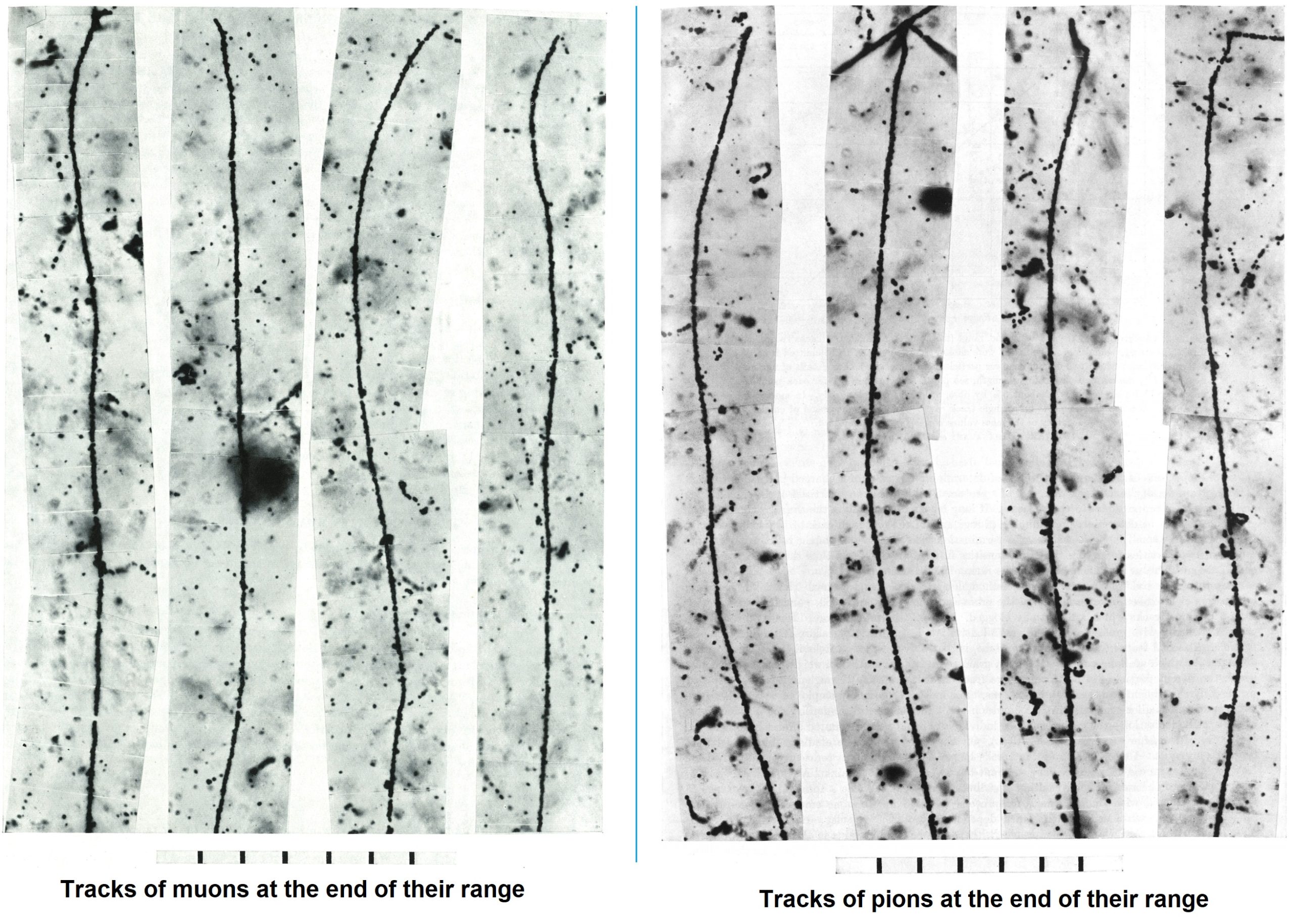Picture of negative muon at the end of their range (below, left) : Muon are identified by the presence of the tracks of associated fast electron starting from the end of their range (see below, tracks b and d). The pronounced scattering of the particles, as compared with protons, allows the tracks to be distinguished easily. The rate of loss of energy varies from about 7 keV/μm where a track enters the field of view, to 25 keV/μm, 10 μm from the end of the range, without producing any clearly marked change in the density of grains in the tracks. Large deviations due to scattering are, however, clearly more frequent towards the end of the range.
Picture of negative pion at the end of their range (upper, right) : Short lengths of the tracks of π– and μ– cannot be distinguished by inspection, but the effects at the end of the range are commonly decisive. Negative pion produce characteristic nuclear disintegrations at the end of their range. Very rarely μ– produce ‘two-prong’ star following nuclear capture. Positive pion, which can’t approach a nucleus due to the electrostatic repulsion and make nuclear disintegration, decay into a muon with a range of 600 μm in emulsion (4,12 MeV kinetic energy). Positive muon decays into an electron when it reaches the end of its range. Sometimes, however, no secondary tracks appear from the ends of the range of π– and μ– due to lack of well-developed electron sensitive emulsion.
Observation of characteristic modes of decay or of interaction with nuclei
The μ+ particles decays into an electron when it reaches the end of its range.
The π– particles produce characteristic nuclear disintegrations at the end of their range (explained here). If two or more secondary charged particles are emitted it’s highly probable in plates exposed to cosmic rays, that the incident Pion was a negative particle. But the following alternative possibilities must be considered :
a) There is the rare possibility that the interaction was due to a K– particle or a negative hyperon. It may be possible to show that the total visible energy of the disintegration, made manifest in the tracks of the charged particles, is greater than the value corresponding to the rest-mass of the pion (>140 MeV).
b) Negative muon sometimes but very rarely, produce ‘two prong stars’ following nuclear capture. In such events, however, the energy of the two charged particles is generally very small and their ranges less than that commonly observed in the ‘two prong’ stars produced by pion (this is because in the muon capture process, the neutron receive a dozen of MeV, the neutrino and the nucleons the rest of the rest-mass energy of the muon. On the other hand, when a negative pion is captured by a nucleus, it interacts with two or more nucleons, and a large fraction of the energy corresponding to the rest-mass of the pion can appear in the resulting disintegration.)
The π+ particles produce at the end of their range a muon with a range of 600 microns in emulsions.
